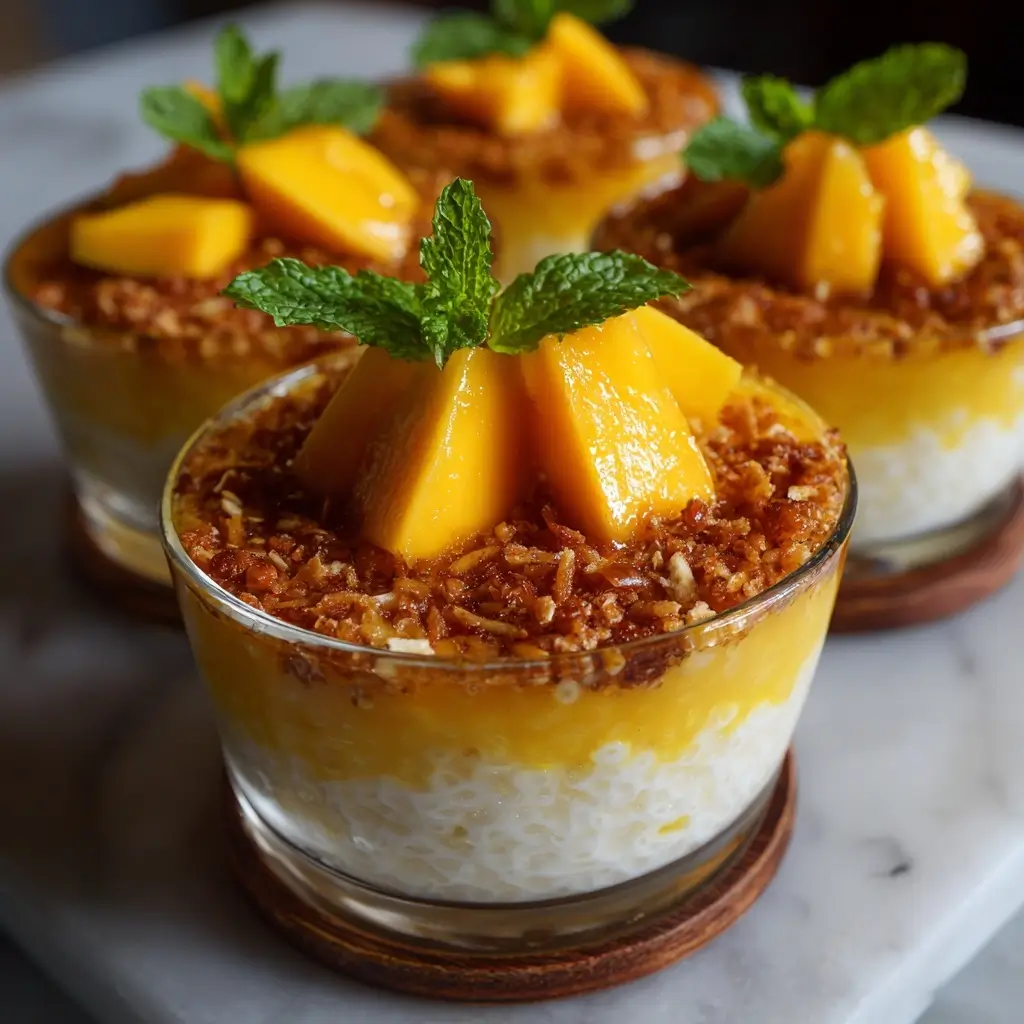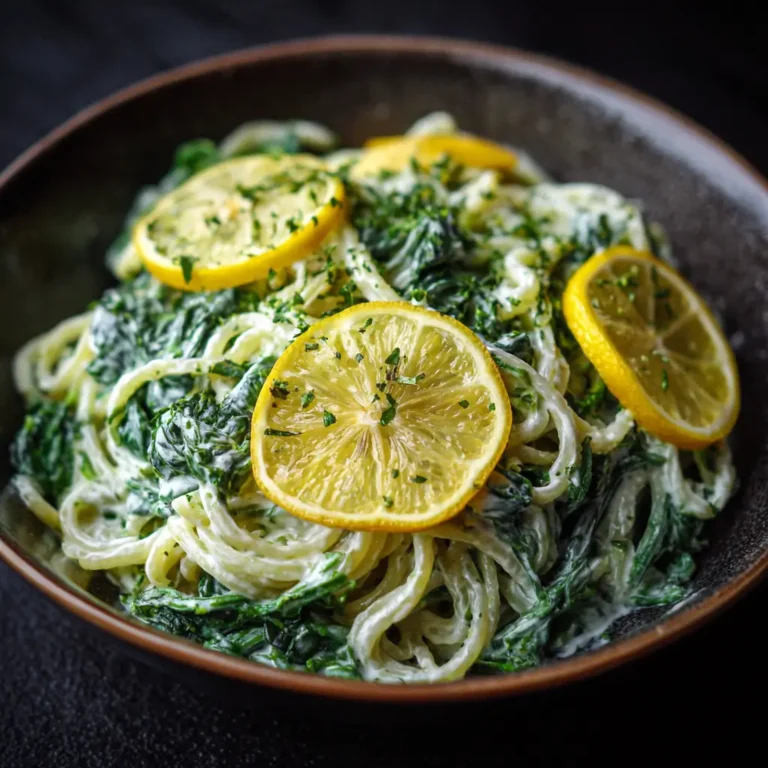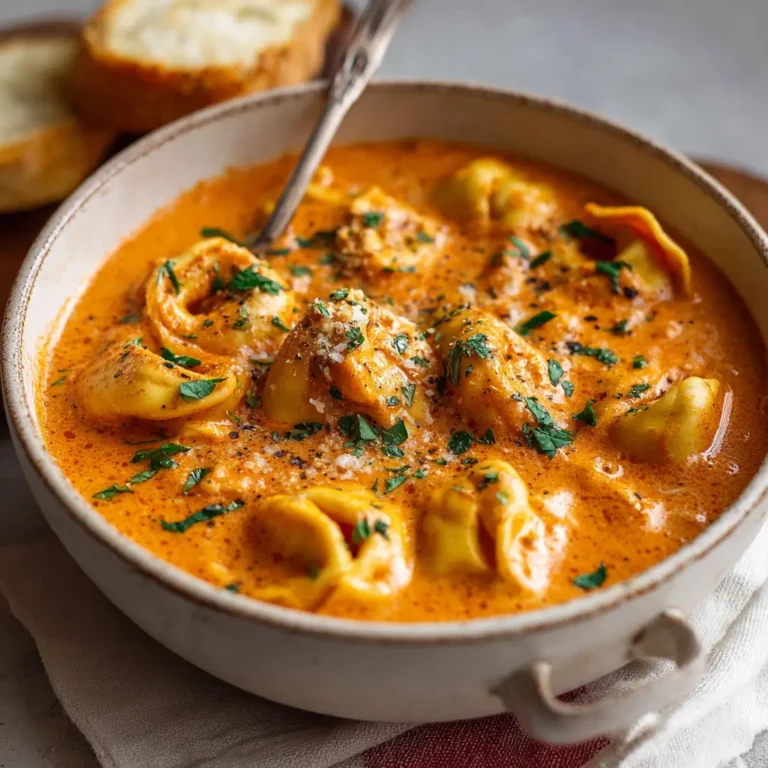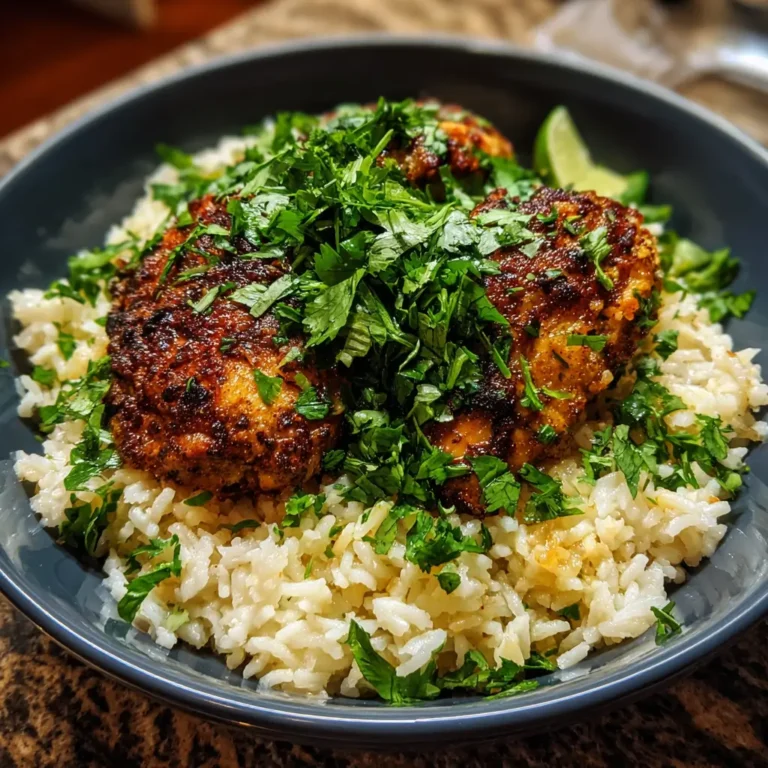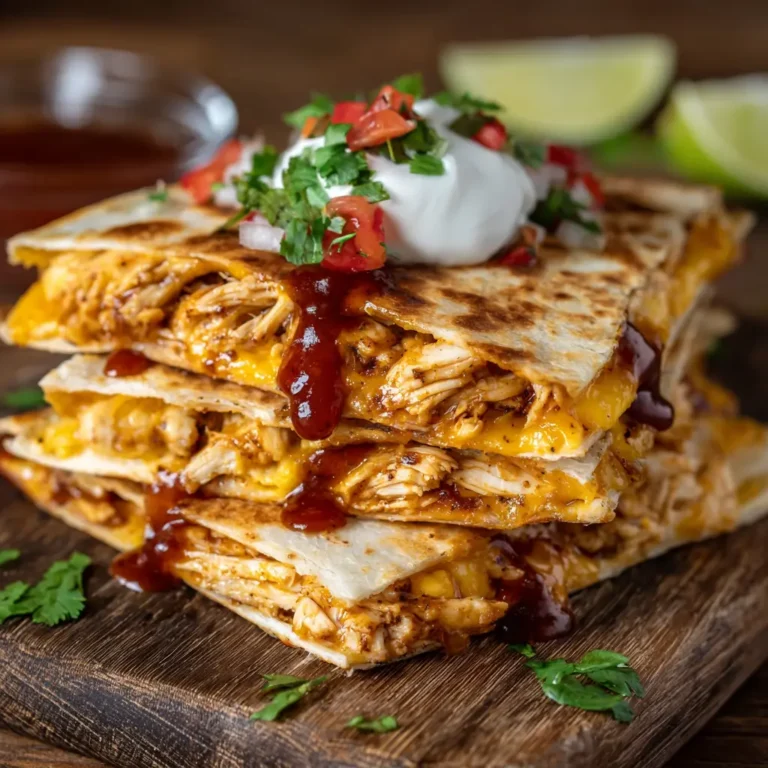Mango Sticky Rice Pudding Cups
Introduction
Mango Sticky Rice Pudding Cups are a delightful fusion of tropical sweetness and creamy richness, inspired by the beloved Thai dessert known as Khao Niew Mamuang. Traditionally served on banana leaves in Thailand, this modern twist transforms the classic dish into an elegant, portable, and Instagram-worthy treat—perfect for brunch gatherings, summer parties, or as a refreshing after-dinner indulgence. By serving mango sticky rice in individual cups, you not only elevate the presentation but also make it easier to enjoy anywhere, anytime. With layers of lusciously ripe mango, velvety coconut-infused sticky rice, and a drizzle of golden coconut sauce, each spoonful is a harmonious blend of textures and flavors that transports your taste buds straight to the streets of Bangkok.
The History
The origins of mango sticky rice trace back centuries to the heart of Thai culinary tradition. In Thailand, mango season coincides with the end of the dry season, typically between March and June, making this dessert a seasonal celebration of nature’s bounty. Sticky rice, or glutinous rice, has long been a staple in Southeast Asian diets, especially in rural communities where it was traditionally steamed in bamboo baskets and eaten with the hands. When paired with sweet, fragrant mangoes and rich coconut milk, the combination became a national favorite, eventually gaining international acclaim.
Originally enjoyed during harvest festivals and family gatherings, mango sticky rice was often offered as a tribute to Buddhist monks or shared among neighbors as a gesture of goodwill. Over time, its popularity spread beyond Thailand’s borders, embraced by food lovers across Asia and the Western world. Today, chefs and home cooks alike have reimagined the dish in countless ways—from deconstructed plating in fine dining restaurants to convenient cup versions ideal for food trucks and dessert bars. The “pudding cup” format we present here honors the roots of this iconic dessert while adapting it for contemporary lifestyles and aesthetics.
Ingredients Breakdown
The magic of Mango Sticky Rice Pudding Cups lies in its simplicity and quality of ingredients. Each component plays a vital role in creating a balanced, satisfying dessert:
- Glutinous Rice (Sticky Rice): Also known as sweet rice, this short-grain rice becomes soft, chewy, and slightly translucent when cooked. It holds its shape well and absorbs flavors beautifully, making it ideal for desserts.
- Coconut Milk: Full-fat coconut milk provides a rich, creamy texture and imparts a subtle tropical flavor. It’s used both in cooking the rice and in making the luscious sauce.
- Sugar: Typically palm sugar or granulated sugar is used to sweeten the rice and sauce. Palm sugar adds a deeper, caramel-like note, enhancing the complexity of flavor.
- Sea Salt: A pinch enhances the overall sweetness and balances the richness of the coconut milk.
- Ripe Mangoes: Choose fragrant, juicy varieties like Ataulfo (Honey mango), Kent, or Tommy Atkins. They should be slightly soft to the touch and emit a sweet aroma near the stem.
- Toasted Mung Beans or Sesame Seeds (optional): These add a delightful crunch and nutty contrast to the creamy layers.
- Fresh Basil or Mint Leaves (optional garnish): Adds a pop of color and a refreshing herbal note.
Using high-quality, fresh ingredients ensures the best possible outcome, allowing the natural sweetness of the mango and the creaminess of the coconut to shine.
Step-by-Step Recipe
- Soak the Rice: Rinse 1 cup of glutinous rice under cold water until the water runs clear. Soak in enough water to cover by at least 2 inches for a minimum of 4 hours, or ideally overnight. This step ensures even cooking and optimal texture.
- Steam the Rice: Drain the soaked rice and transfer it to a steamer basket lined with cheesecloth. Steam over boiling water for 20–25 minutes, or until the grains are tender and glossy. Avoid using a rice cooker if possible; steaming gives superior results.
- Prepare Coconut Sauce: While the rice steams, heat 1 can (13.5 oz) of full-fat coconut milk in a saucepan over medium heat. Add 1/3 cup of sugar (palm sugar preferred) and 1/4 teaspoon of sea salt. Stir until dissolved. Remove 1/2 cup of this mixture and set aside for drizzling later.
- Infuse the Rice: Once the rice is cooked, transfer it to a large bowl. Pour the warm coconut mixture (minus the reserved portion) over the hot rice. Gently fold to combine, taking care not to mash the grains. Cover and let it sit for 30 minutes to absorb the flavors.
- Prepare the Mango: Peel and slice 2–3 ripe mangoes into thin strips or small cubes, depending on your layering preference.
- Assemble the Cups: Using clear glass jars, mason cups, or dessert glasses, begin layering: Start with a spoonful of coconut sticky rice, followed by a layer of fresh mango. Repeat the layers, finishing with mango on top.
- Add Final Touches: Drizzle the reserved coconut sauce over the top. Sprinkle with toasted mung beans, sesame seeds, or shredded coconut for added texture. Garnish with a small mint or basil leaf for freshness and visual appeal.
- Chill or Serve Immediately: For a chilled version, refrigerate for 30–60 minutes before serving. Alternatively, serve at room temperature for a more traditional experience.
Tips
- Use Fresh, Ripe Mangoes: Never use underripe or canned mangoes—they lack the sweetness and juiciness essential for authentic flavor.
- Don’t Skip the Soaking Step: Soaking ensures the rice cooks evenly and achieves the right sticky yet fluffy texture.
- Steam, Don’t Boil: Steaming preserves the integrity of the rice grains better than boiling, which can make them mushy.
- Warm Rice Absorbs Better: Always mix the coconut sauce into freshly steamed, hot rice so it absorbs the liquid fully.
- Balance Sweetness: Taste the coconut sauce before adding it to the rice—you can adjust sugar or salt based on your mango’s sweetness.
- Layer Creatively: For visual impact, alternate thin layers or create a gradient effect from white rice to golden mango.
- Serve in Clear Containers: Transparent cups showcase the beautiful layers and make the dessert look professional and appetizing.
- Make Ahead Tip: You can cook the rice and prepare the sauce a day in advance. Store separately in the fridge and reheat the rice gently with a splash of coconut milk before assembling.
Variations and Customizations
Mango Sticky Rice Pudding Cups are wonderfully versatile and can be customized to suit different tastes, dietary needs, and occasions:
- Vegan Version: The recipe is naturally vegan if you use palm sugar (some refined sugars are processed with bone char). Ensure all ingredients are certified plant-based.
- Gluten-Free: Glutinous rice is gluten-free despite its name—it refers to stickiness, not gluten. Just confirm your coconut milk and sugar are gluten-free certified if needed.
- Low-Sugar Option: Reduce sugar by half and use a natural sweetener like monk fruit or erythritol. You can also rely more on the mango’s natural sweetness.
- Fruit Swaps: Try pairing the sticky rice with other tropical fruits like pineapple, lychee, passionfruit, or banana.
- Layered Parfait Style: Add a layer of coconut yogurt or chia pudding between the rice and mango for extra creaminess and nutrition.
- Adult Twist: Infuse the coconut sauce with a splash of rum or coconut liqueur for a cocktail-inspired dessert.
- Nut-Free Crunch: Replace mung beans with crushed roasted coconut flakes or puffed rice cereal for texture without nuts.
- Mini Dessert Shots: Serve in espresso cups or shot glasses for bite-sized treats at parties.
- Colorful Layers: Use purple sticky rice (black rice) for a dramatic, antioxidant-rich variation. When cooked, it turns deep purple and pairs stunningly with yellow mango.
Health Considerations and Nutritional Value
While undeniably delicious, Mango Sticky Rice Pudding Cups are a dessert best enjoyed in moderation. Here’s a breakdown of the nutritional profile per serving (approx. 1 cup assembled):
- Calories: ~350–450 kcal depending on size and ingredients.
- Carbohydrates: ~60–70g, primarily from rice and mango. Contains natural sugars and fiber from fruit.
- Fats: ~15–20g, mostly healthy saturated fats from coconut milk, which may support heart health in moderation.
- Protein: ~4–6g, modest but enhanced if topped with nuts or seeds.
- Vitamins & Minerals: Rich in Vitamin C and A from mango, plus manganese, copper, and iron from sticky rice and coconut.
Considerations:
- High Glycemic Index: The combination of white sticky rice and sugar can spike blood glucose levels. Diabetics should consume sparingly or opt for reduced-sugar versions.
- Portion Control: Due to calorie density, stick to single-serving cups rather than large bowls.
- Healthy Fats: Coconut milk contains medium-chain triglycerides (MCTs), which are metabolized differently and may offer energy-boosting benefits.
- Digestibility: Glutinous rice is easy to digest for most people, though those sensitive to high-FODMAP foods may need caution.
Overall, this dessert offers some nutritional benefits when made with whole, unprocessed ingredients, but it remains a treat best savored occasionally.
Ingredients
- 1 cup glutinous (sticky) rice, rinsed and soaked
- 1 13.5 oz can full-fat coconut milk (divided)
- 1/3 cup palm sugar or granulated sugar (adjust to taste)
- 1/4 tsp sea salt
- 2–3 ripe mangoes, peeled and sliced
- 2 tbsp toasted mung beans or sesame seeds (optional)
- Fresh mint or basil leaves for garnish (optional)
- Shredded coconut (toasted or raw, optional)
Directions
- In a large bowl, rinse the glutinous rice under cold water until the water runs clear. Cover with at least 2 inches of water and soak for 4–12 hours.
- Drain the soaked rice and place it in a steamer basket lined with damp cheesecloth. Steam over boiling water for 20–25 minutes, or until the rice is translucent and tender.
- While the rice steams, pour 1 cup of coconut milk into a saucepan. Add sugar and salt. Heat over medium, stirring until sugar dissolves. Remove 1/2 cup of this mixture and set aside for drizzling.
- Once rice is cooked, transfer to a mixing bowl. Pour the remaining coconut mixture over the hot rice. Gently stir to coat every grain. Cover with a clean cloth and let rest for 30 minutes.
- Cut mangoes into thin slices or small cubes. Set aside.
- To assemble, choose 4–6 clear serving cups. Spoon a layer of coconut sticky rice into the bottom, followed by a layer of mango. Repeat the layers, ending with mango on top.
- Drizzle generously with the reserved coconut sauce. Sprinkle with toasted mung beans, sesame seeds, or shredded coconut. Garnish with a fresh herb leaf.
- Serve immediately at room temperature, or chill in the refrigerator for 30–60 minutes for a cooler dessert.
FAQ
Can I use regular rice instead of glutinous rice?
No, regular rice will not achieve the sticky, chewy texture essential to this dessert. Glutinous rice is unique in its starch composition and cannot be substituted.
Where can I buy glutinous rice?
It’s available in most Asian grocery stores, health food stores, or online. Look for “sweet rice” or “sticky rice” in plastic bags or vacuum-sealed packs.
Can I make this ahead of time?
Yes! Cook the rice and store it in the fridge for up to 2 days. Reheat gently with a splash of coconut milk before assembling. Cut mangoes just before serving to prevent browning.
Why is my rice too hard or too mushy?
Under-soaking or under-steaming leads to hard rice. Overcooking or boiling instead of steaming causes mushiness. Stick to the soaking and steaming method for perfect results.
Is this dessert gluten-free?
Yes, as long as the rice and coconut milk are certified gluten-free. Always check labels if cross-contamination is a concern.
Can I freeze mango sticky rice?
Not recommended. Freezing alters the texture of both the rice and mango, making them soggy upon thawing.
What kind of mango is best?
Ataulfo (Honey or Champagne mango) is ideal—sweet, creamy, and less fibrous. Kent or Keitt mangoes also work well if fully ripe.
Can I use light coconut milk?
You can, but the dessert will be less creamy and flavorful. Full-fat coconut milk is highly recommended for authenticity.
Summary
Mango Sticky Rice Pudding Cups are a modern, elegant take on a timeless Thai classic, blending sweet ripe mangoes with creamy coconut-infused sticky rice in charming individual servings. Easy to customize and perfect for any occasion, this tropical delight brings sunshine to every spoonful.
